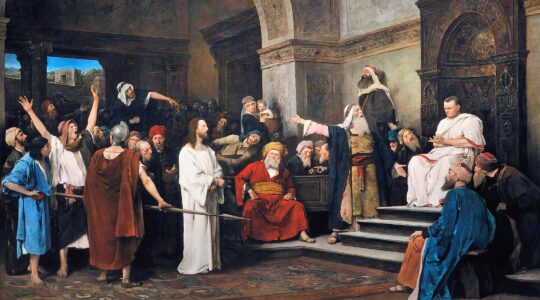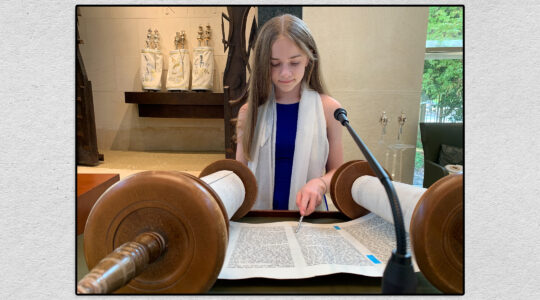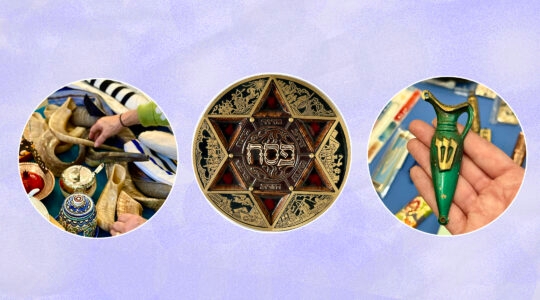On the 6th day of Sukkot, we were invited into the Sukkah of the National Center for Children and Families Greentree Shelter. It wasn’t a Sukkah made of canvas or wood, and it didn’t have real walls or a bamboo schach; but this temporary shelter was a Sukkat Shalom—a place of peace, protection and caring—where parents and children could take refuge from hardship and be strengthened by community.
Earlier this summer, my artistic daughter, Yonina, had reached out to the shelter, wondering if perhaps she could paint a mural for their space.
She envisioned painting a joyful scene of children playing outside together under a bright sun and sky…. She wanted to use her art to uplift and strengthen others.
Dahlia Levin, director of external affairs, welcomed her idea, and took it a step or two further: “What if you design a mural and we have children from your neighborhood and children at the shelter help paint it together?” The mural would be featured at the upcoming HeART of Community event in the fall.
Yonina loved the idea, and began designing and planning. She visualized trees, clouds, butterflies and landscapes, and silhouetted children dancing, swinging, reading books together and holding hands. She painted several smaller models. She used our leaf-strewn garage as a studio where she spent nights sketching out her final design on a wall-sized slab of fiberboard.
Then it was time to invite the children in our neighborhood: girls came two by two, their wide eyes shining above their masks, as they listened to Yonina’s explanation about the shelter, and the children there who would be their long-distance painting-mates. The little painters got to work, choosing colors, getting creative with patterns and details—often reminding each other to leave spaces for the children at the shelter to paint, sometimes wondering aloud we could one day meet our painting friends in-person when Covid was over.
As the girls brushed on their blues, pinks and yellows, the mural came to life—but the remaining white, unpainted figures and spaces waited impatiently for their unmet friends to continue the conversation.
Finally it was time to bring the mural to the shelter. Yonina and I had no idea what to expect—would the children be too little, or too old for this? Would they want to paint? Would it be fun for them? Would we seem like strange visitors, with a strange request?
Our uncertainties blew away in the fall breeze when the children—all different ages but all exactly the right age—welcomed us.
They greeted us and the mural with respect and eagerness.
Who knew how much fun it could be to mix and create your own colors! Who knew that seven children could paint the same mural together so nicely, each making room for the other so they could all be part of it together? Including each other in the physical space and the feeling of being an important contributor to the big picture?
I was touched by their gentleness and respect for each other. I was touched by their delight in creating the novel color blue-red-green. I was touched by the care they took in painting delicate butterflies.
I was touched by the pride they took in painting the letters of the words “Heart of Community” with waves and swirls of thick, multi-colored paint.
I was touched by Yonina’s soft, open heart, as the children painted unexpected colors over her original design… She was so happy to see them “get into it” it didn’t matter that her initially perfect lines were now under several new layers.
As the children washed their hands and a few lingered to continue painting, Dalia reflected to me how extra meaningful it was that this happened over the holiday of Sukkot: “I always think of the blessing, וּפְרוש עָלֵינוּ סֻכַּת שלומֶךָ Spread over us your shelter of peace.” She recalled her father, the chazzan (cantor), leading the blessing for all the community’s children under the canopy in their synagogue on Simchat Torah.
In that moment, I could practically feel a soft canopy blowing around us—around the children, around the mural, around the courtyard of this shelter. סֻכַּת שלומֶךָ Your Sukkah of peace.
How much we humans need to be invited into a space and be told you are safe here, you are loved here.
Though the walls of a Sukkah are physically weak and impermanent, we feel protected with people who appreciate and care about us. This year, many made their Sukkot even more vulnerable—using the minimum 2 ½ walls, even walls made of string—so that they could sit with others in the safest most caring way.
We left the walls or our Sukkot open and exposed like softened hearts: וּמָ֨ל יְהוָ֧ה אֱלֹהֶ֛יךָ אֶת־לְבָבְךָ֖.
As my daughter and I gathered up the wet paint brushes and paper-plate pallets to leave the shelter, I felt an unexpected feeling—that I had been treated here with loving kindness. How kind of these children to bring care and joy and Thank Yous to this mural. How kind of Dahlia to invite us and make sure we felt comfortable and appreciated. I was reminded of the canopy of kindness connecting Boaz and Ruth: while technically Boaz was the protector and provider, he felt Ruth had done him great kindness by coming under his protection; and for Ruth, she felt he had done her great kindness by knowing what she had been through, appreciating her bravery, and speaking to her heart.
Think about those moments when you invited someone else to come under your shelter, and the peace they felt knowing they were cared for, welcome, and safe from judgment or hurt.
Think about those moments when you felt complete shalom and shelter in the presence of another, because you were cherished for being you. Think of those moments you felt protected under someone’s wings because they understood what you had been through, or recognized what you had done, and spoke to your heart.
As we approach the end of this holiday, we can take with us the prayer for a shelter of peace וּפְרוש עָלֵינוּ סֻכַּת שלומֶךָ – a prayer which speaks both yearning and gratitude.
As we leave the shelter of our physical Sukkot, we can make sure to pause to feel the canopy of peace swirling around us, sheltering and connecting us with loving kindness.
Lisi Levisohn is a child psychologist who also enjoys teaching Torah-Inspired science, Girl’s Tefillah and the Matan Bat Mitzvah program in her community, Silver Spring, MD.
Posts are contributed by third parties. The opinions and facts in them are presented solely by the authors and JOFA assumes no responsibility for them.
If you’re interested in writing for JOFA’s blog contact dani@jofa.org. For more about JOFA like us on Facebook or visit our website.
The New York Jewish Week brings you the stories behind the headlines, keeping you connected to Jewish life in New York. Help sustain the reporting you trust by donating today.




